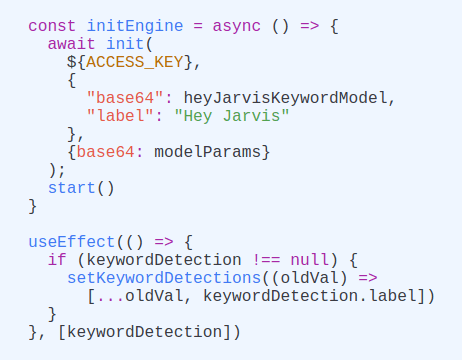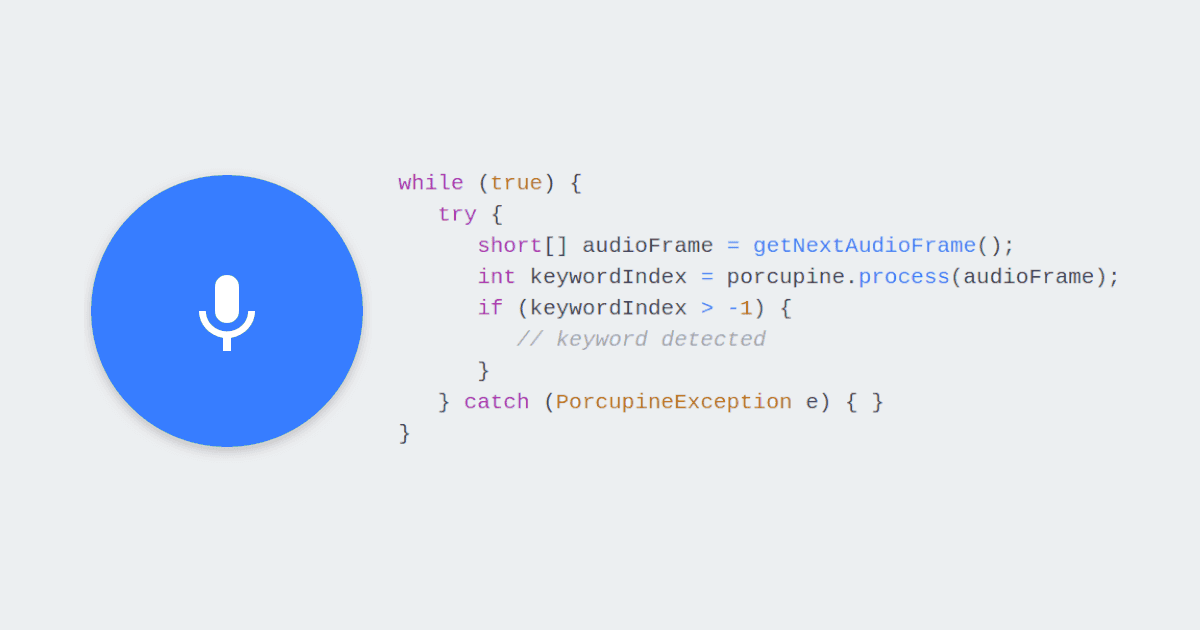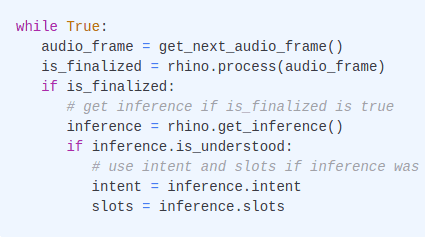Picovoice is built by developers for developers. It’s not surprising that there’s a long list of SDKs that are available to build voice AI-powered products with Picovoice’s on-device voice recognition technology. StackOverflow developer survey shows that while React.js is the most commonly used web framework, Rust is the most loved and Python is the most wanted language by developers. The survey also shows that more than 10k JavaScript developers want to start or continue developing in Go or Rust. [1] Whether you want to deploy on-device speech models with Rust, Python or JavaScript, there is a Picovoice SDK for all. Pick your favourite one and build with the Free Plan now!
Mobile: Picovoice Mobile SDKs enable developers to create mobile applications elevated with on-device voice recognition benefits and without the limitations of Android [Android Speech Recognizer or Google Assistant Actions] and iOS [iOS Speech Recognition API or SiriKit] kits.
- Android demo to experience on-device voice recognition with a custom wake word on Android apps
- Flutter demo to do voice recognition on both Android and iOS
- iOS SDK for on-device voice recognition with a voice-enabled coffee maker demo
- React Native voice recognition demo with Porcupine Wake Word and Rhino Speech-to-Intent
Web: For the truly hands-free voice-enabled web experience across the browsers, Picovoice Web SDKs are the only solution in the market.
- Angular demo of a voice-enabled timer
- Rhino Speech-to-Intent React demo to add offline voice recognition to web browsers
- Vue demo for a voice-activated clock app processing voice data offline within web browsers
- Chrome extension with hotword triggering to activate Google search hands free, built with WebAssembly
Desktop, Server or Single Board Computers: Picovoice SDKs can be used to build voice experiences run across Linux, macOS, Windows, BeagleBone, NVIDIA Jetson Nano and Raspberry Pi.
- .NET demo to add offline voice controls to a chess game
- C demo to use the Picovoice Platform on real-time audio streams and audio files
- Go language demo to design and develop voice user interfaces
- Java Swing for offline voice-enabled smart lighting
- NodeJS demos to show how to use the End-to-End speech recognition platform on real-time audio streams and audio files
- Python on-device voice recognition demo to build a voice clock with Porcupine Wake Word and Rhino Speech-to-Intent
- Rust demo to experience on-device voice recognition with Rhino Speech-to-Intent
- Unity voice recognition demo to build a hands-free VR video player with Porcupine to trigger a hotword and Rhino Speech-to-Intent for voice control
Microcontrollers: Picovoice runs even on tiny microcontrollers to create voice experiences. Picovoice Shepherd is the first no-code platform to add voice to MCUs.
- Arduino on-device voice recognition demo for smart lighting
- Infineon demo for IoT applications
- NXP voice recognition demo for home automation
- ST demo with Shepherd No-code platform







